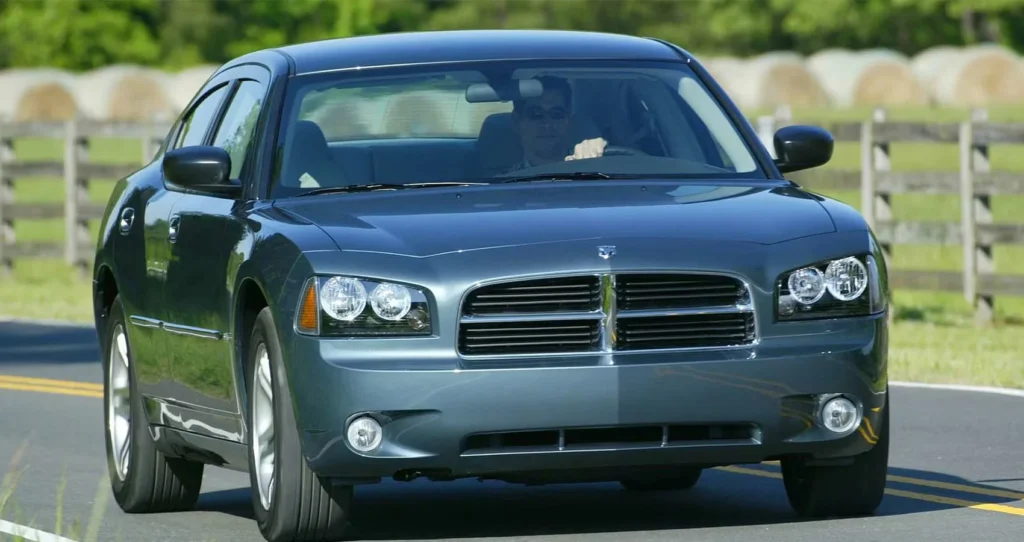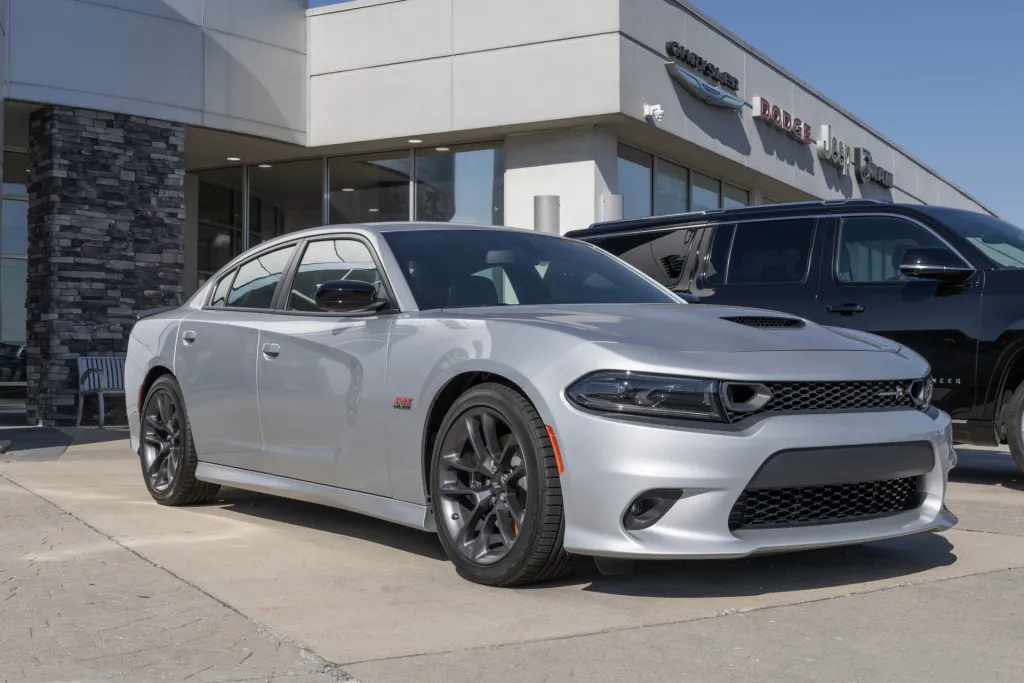Our guide categorizes the best and worst years for every Dodge Charger model from 2006 to the present.
Decide which model year of Dodge Charger is best. Using our ultimate Dodge Charger manual, you will discover which year to avoid and which to choose.
With insights into reliability, performance, and value, this comprehensive guide offers a comprehensive overview of the best and worst Dodge Charger generations.

This comprehensive analysis of the Dodge Charger’s history is based on extensive research, owner surveys, maintenance records, and industry reports, allowing potential buyers and enthusiasts to make informed choices.
This study will examine the 6th and 7th iterations, highlighting the standout characteristics of the best years, exploring the neutral years, and exposing the weaknesses of the worst years.
Taking a look at the Dodge Charger generations is a good place to start.
Dodge Charger Generations
Historically, the Dodge Charger represents American muscle cars and can be traced back to the 1960s. This vehicle is an embodiment of strength, style, and capability like no other.
The following generations are covered in this article:
| Generation | Years |
| 6th generation (LX) | 2006-2010 |
| 7th generation (LD) | 2011-Present |
Our goal is to provide a better overview of these generations. Prospective buyers might decide to purchase a product based on understanding their variations and unique characteristics.
Dodge Charger Best, Neutral, and Worst Years
Based on thorough research, we rank and categorize products based on a variety of factors, including but not limited to:
An illustration of the collective ratings from all the sources mentioned above can be found below:
All model years from the 6th and 7th generations were categorized as best, neutral, and worst in the table below.
| Generation | Best Years | Neutral Years | Worst Years |
| 6th generation | 2009 2010 | 2007 2008 | 2006 |
| 7th generation | 2016 2019 2020 2022 | 2017 2023 | 2011 2012 2013 2014 2018 2021 |
The term neutral year is used to define years when the car performed well without excelling or faltering significantly.
There are some factors that negatively affect rankings, such as NHTSA recalls. A lower score is given to a vehicle that has more complaints and recalls because this indicates less reliability.
We’ll dive into the specifications of the best, neutral, and worst years as a result of this foundation.
Best & Worst Years for Dodge Charger 6th Generation (2006-2010)
The 6th Generation Dodge Charger was a revival of the iconic muscle car that spanned from 2006 to 2010. This vehicle attracted both nostalgic enthusiasts and new fans with its new technological and safety features.

The Best Years: 2009, 2010
In 2009 and 2010, the 6th generation was at its peak, earning the title of best year.
Technology advancements like adaptive cruise control and traction control, as well as safety features like antilock brakes and traction control highlighted these years as they featured modified engines with greater efficiency and performance.
A combination of traditional muscle car aesthetics and contemporary comforts made these years particularly desirable, appealing to a wide audience.
The Neutral Years: 2007, 2008
It is fair to say that the Charger models for 2007 and 2008 fall into the neutral category, displaying balanced attributes but lacking the notable features that characterized the best years.
There were some transmission problems, including complete transmission failure in some cases, in the 2007 model, which continued to introduce previously introduced features.
In 2008, attempts were made to address prior concerns. However, electrical issues were introduced that resulted in the car losing power unexpectedly during driving.
Despite their decent engine performance, they did not reach the heights of the 2009 and 2010 models due to a lack of innovation and some quality control problems.
The Worst Years: 2006
In 2006, the inaugural year of the 6th generation, a number of factors made it the worst year.
A major problem was an engine stalling without warning, resulting in a failure of the whole electrical system, which then re-booted itself in a short time.
In addition to this defect, the power steering also failed, posing a serious safety risk. In most cases, these problems were caused by valve seats that had dropped in the 5.7-liter Hemi engine.
Moreover, Dodge had initial problems integrating new technologies and elements into this year’s design.
In evaluating this iconic line of vehicles, prospective buyers should be sure to thoroughly evaluate the 2006 model year.
The NHTSA has issued recalls and complaints for Dodge Chargers in 2006, 2007, and 2008.
Best & Worst Years for Dodge Charger 7th Generation (2011-Present)
A significant evolution in design and performance has been achieved within the 7th Generation Dodge Charger, which was introduced in 2011 and continues to be produced to this day.

In addition to improved technology, better fuel efficiency, and increased safety, the 7th generation emphasized modernization.
The Best Years: 2016, 2019, 2020, 2022
A pinnacle in the Charger’s growth occurred in 2016, 2019, 2020, and 2022, the most successful years of the 7th generation.
As standard, the 2016 model features a refined 3.6L Pentastar V6 engine, with the option to upgrade to a more powerful HEMI V8. There was a special mention for the SRT Hellcat version, which was rated at 707 hp.
There has been an improvement in performance and fuel efficiency for the 2019 Dodge Charger, especially when it comes to the V8 engine. In addition to wider tires, the Scat Pack Widebody model was designed to offer more grip and handling on the road.
A rearview camera and lane departure warning systems became standard features in the 2020 and 2022 Dodge Charger models, solidifying the Charger’s safety reputation.
The Neutral Years: 2017, 2023
In terms of quality, the 2017 and 2023 models fall into the neutral category, offering balanced qualities without the standout qualities of earlier models.
These years were not notable for any significant advancements or setbacks while maintaining the core features of the standout models.
As a safe option for those who desire the Charger experience without requiring the exceptional, they continued the lineage with steady performance and reasonable reliability.
The Worst Years: 2011, 2012, 2013, 2014, 2018, 2021
As with the previous generation, the 7th generation also had its share of troubled years plagued by a number of issues. In 2011, 2012, the most common electrical system problems were electrical system failures and failures of exterior lighting.
Consequently, low beams failed because of overheated connectors in the lighting harness, and stability control and anti-lock braking systems failed due to overheating in the power distribution center.
Due to an overheated fuse, anti-lock brakes and stability control were lost on May 7, 2012. During these model years, over 127,350 vehicles were recalled, highlighting a significant issue.
The age of the vehicle also increased the risks associated with unexpected airbag deployments.
Engine stalls were reported in the 2013 and 2014 models due to alternator problems.
There were also some problematic models in 2018 and 2021, however, these models mostly suffered from less critical issues that simply impacted the user experience, rather than posing a safety threat.
You can find recalls and complaints for the Dodge Charger from 2011, 2012, 2013, 2014 on the NHTSA website.
Best & Worst Dodge Durango Years | Years To Avoid
Best & Worst Dodge Challenger Years | Years To Avoid
Conclusion
As a result, it becomes increasingly clear for you to pick the best year of the Dodge Charger, equipped with the most reliable features, and stay away from the worst models and their pitfalls.
When it comes to the Dodge Charger, which features resonate most with you? Is it the engine, technology, or safety features that make the car stand out?
Please share your insights if you’ve owned or driven one of these generations of Dodge Chargers.
